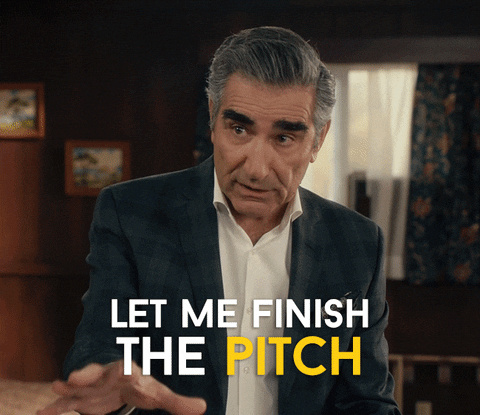Creating YouTube scripts that truly connect with your audience shouldn’t take hours of staring at a blank page. The difference between a video that gets thousands of views and one that vanishes into the algorithm often comes down to how well you structured your initial prompt for ChatGPT.
This article shows you exactly which elements to include in your prompts, how to build them step by step, and gives you proven templates for the most popular YouTube formats that you can customize in minutes.
What Makes a Script Prompt Truly Effective
A good prompt for writing YouTube scripts gives ChatGPT clear instructions, specific context, and defined structure. The difference between asking “write a YouTube script about marketing” and giving an effective prompt is like the difference between asking a stranger for vague directions versus giving a professional driver the exact address, arrival time, and route preferences.
Generic prompts produce shallow content that sounds identical to thousands of other videos. Effective prompts generate scripts with a strong hook, clear narrative structure, and strategic calls to action that actually convert viewers into subscribers.
Think of ChatGPT as a talented screenwriter who just walked into your office but knows nothing about your project. Without context on your audience, tone, or format, the AI will produce something technically correct but completely generic. A well-crafted prompt works like a full production briefing where every detail shapes the final outcome.
Key Components of a Winning Prompt
Every effective prompt contains fundamental elements that guide ChatGPT toward the result you want. Specificity in each component transforms vague requests into precise instructions.
1. Role and Expertise of the AI Screenwriter
Assigning ChatGPT a specific role radically changes the quality of the result. Instead of simply saying “write a script,” instruct the AI to act as “a screenwriter specialized in educational tech content for beginner audiences.”
This adjustment activates language patterns, structure, and tone appropriate for that niche. The AI automatically adapts vocabulary, examples, and storytelling style based on the expertise you assign.
2. Video Goal and Format
Specifying whether your video is a step-by-step tutorial, product review, or sales announcement completely determines the script’s structure. A tutorial requires sequential instructions with logical transitions, while a storytelling video needs a narrative arc with tension and emotional resolution.
Format also influences technical elements like information density and narrative pacing. A 60-second Short demands an immediate hook and ultra-condensed message, while a 15-minute explainer allows for depth and gradual development of complex concepts.
3. Audience Profile
Describing your target audience allows ChatGPT to tailor appropriate language and examples. A script for 35–45-year-old entrepreneurs will use completely different references and vocabulary than one aimed at 20-year-old college students.
This component also affects the emotional tone of the script. A corporate audience responds better to professional, data-driven content, while young creators connect more with humor and current cultural references.
4. Structure and Duration
Requesting a specific structure gives ChatGPT a clear blueprint to organize the content. For example, you can ask for a 15-second introduction, three main points of 2 minutes each, and a 30-second conclusion.
The target duration also determines the depth of each section. A 5-minute video requires rigorous synthesis, while a 20-minute video allows exploration of nuances and detailed case studies.
5. Narrative Devices and Tone
Requesting specific narrative elements transforms informative scripts into memorable content. Rhetorical questions, visual analogies, and subtle humor create emotional connection moments that boost retention beyond simple information delivery.
Tone colors every sentence in the script. Specifying whether you want an inspirational style, patient educational tone, or urgent and persuasive voice ensures consistency from beginning to end.
6. SEO Keywords
Naturally integrating relevant search terms into your prompt allows ChatGPT to organically incorporate them into the video title, description, and script. Keywords also help YouTube understand the topic and context of your content, improving algorithmic recommendations.
A script that naturally mentions "digital marketing strategies for small businesses" several times is more likely to show up in related searches.
Step-by-Step Guide to Writing Your Definitive Prompt
Building an effective prompt follows a systematic methodology anyone can master. This process guarantees consistently professional results.
Step 1: Define Your Goal
Before writing a single word of the prompt, clarify exactly what you want to achieve with the video. Are you aiming to educate on a specific concept, generate leads for your service, or grow your subscriber base? This goal guides all subsequent decisions about structure, tone, and calls to action.
A clear goal also helps you assess whether the generated script fulfills its purpose. If your goal is to generate leads but the script lacks a persuasive CTA, you’ll know immediately that the prompt needs adjusting.
Step 2: Describe the Audience
Create a detailed profile of your ideal viewer including demographics, familiarity level with the topic, and motivations for watching the video. The more specific you are, the more personalized the resulting script will be.
For example, “boutique gym owners with 1–3 years of experience struggling with client retention” yields much more relevant content than simply “fitness entrepreneurs.”
Step 3: Detail the Structure
Specify the exact format you want: total duration, number of main sections, and approximate time per segment. This structure acts as the skeleton upon which ChatGPT builds the narrative content.
You can also request specific elements like “include a provocative question in the first 5 seconds” or “end each section with a transition that builds curiosity for the next.”
Step 4: Add SEO Guidelines
Include 3–5 main keywords you want to rank for and ask ChatGPT to incorporate them naturally in the suggested title, video description, and throughout the script. You can also request semantic variations of your main keywords to broaden your SEO reach without sounding repetitive.
If your target term is “social media marketing,” asking to include variations like “social media strategies” or “promotion on digital platforms” expands your visibility in searches.
Step 5: Request Clarifying Questions
Instruct ChatGPT to ask you 3–5 clarifying questions before generating the final script. This creates a dialogue where the AI identifies information gaps or ambiguities in your initial prompt.
Typical questions cover aspects like preferred tone, formality level, whether to include humor or keep it serious, and specific examples you want mentioned. This validation step prevents misunderstandings and ensures full alignment before generation.
7 Ready-to-Use Prompts for Different YouTube Formats
These proven prompts give you specific templates that you can customize based on your niche and audience. Each is optimized for a particular YouTube content format.
1. 5-Minute Tutorial
"Act as an expert instructor in [your topic]. Create a 5-minute tutorial script to teach [specific skill] to [target audience with experience level]. Structure the script with: 10-second hook presenting the problem, promise of what they'll learn, 3 clearly numbered steps lasting 90 seconds each, tips to avoid common mistakes, and a 20-second closing with a CTA to subscribe. Use conversational language, include moments to point out visual elements on screen, and end each step with a transition that keeps the momentum going."
This format works exceptionally well for hands-on educational content. The clear numbered structure helps with retention and makes it easy for viewers to follow along as they execute.
2. Educational Explainer Video
"You are an educator specialized in simplifying complex concepts in [industry/topic]. Write an 8–10-minute script that explains [complex concept] to [audience with no prior knowledge]. Start with an everyday analogy that illustrates the concept, then break it down into 3 core components using visual examples and simple metaphors. Include a 'common misunderstandings' section and close by summarizing the key points in 30 seconds. Maintain a patient and encouraging tone, avoid unexplained jargon, and use rhetorical questions to check understanding."
Explainer videos require narrative patience and logical progression. This prompt ensures that ChatGPT builds knowledge gradually without overwhelming the viewer.
3. Product Review
"Act as a professional reviewer with 10 years of experience in [product category]. Create a 7-minute review script for [specific product] aimed at [buyer profile]. Structure: hook showing the product in action, context for why you're reviewing it, unboxing/first impressions, analysis of 4–5 key features with demonstrations, honest pros and cons section, quick comparison with 2 main alternatives, final verdict with recommendation of who the product is ideal for. Use an objective but enthusiastic tone, mention pricing and where to buy, include a transparency disclaimer on how the product was obtained."
Effective reviews balance excitement with critical honesty. This format builds trust by addressing real limitations while highlighting genuine strengths.
4. Sales Video Script
"You are a copywriter expert in direct-response video marketing. Write a 3–4 minute sales video script to sell [your product/service] to [ideal customer with a specific pain point]."
Persuasive structure includes:
-
Hook: question that identifies the pain (10 sec)
-
Agitation: show the cost of not solving the problem (45 sec)
-
Solution intro: position your offer as the answer (30 sec)
-
How it works: explain with 3 key tangible benefits (90 sec)
-
Social proof: quick but specific testimonial (20 sec)
-
Objection handling: anticipate and resolve doubts (30 sec)
-
Urgency-driven offer: reason to act now (20 sec)
-
Clear CTA: next step with simple instructions (15 sec)
Sales videos require sophisticated persuasive psychology. This prompt integrates proven copywriting techniques tailored to video format.
5. Inspirational Storytelling
"Act as a master storyteller in motivational content. Write a 6–8-minute script that tells [personal story/case study] to inspire [target audience] about [topic/challenge]. Narrative structure: set the context and main character, introduce the conflict/obstacle, moment of crisis or lowest point, decision to change or transformative action, overcoming process with specific challenges faced, result/achieved transformation, universal lesson for the audience, CTA inspiring a specific action. Use emotional but authentic language, include sensory details that make the story vivid, and clearly connect the story to your audience's situation."
Inspirational storytelling lives or dies by emotional authenticity. This format ensures a complete narrative arc with emotional beats that keep viewers engaged.
6. 60-Second Shorts
"You are a short-form content specialist. Write a 60-second Short script about [trending topic or valuable tip] for [platform audience]. Ultra-condensed structure: impactful visual/verbal hook (3 sec), immediate value promise (4 sec), core content in 3 ultra-concise points (40 sec), memorable punchline or conclusion (8 sec), quick CTA to follow/save (5 sec). Every word counts—remove all fluff. Use direct language, short headline-style phrases, and structure for maximum retention. Include rapid visual change cues every 7–10 seconds."
Shorts demand extreme language economy. This prompt forces ChatGPT to ruthlessly prioritize, keeping only what’s absolutely essential.
7. Top 10 List
"Act as a content creator specialized in listicles. Write a 12–15-minute script for a ‘Top 10 [topic]’ video aimed at [specific audience]. Structure: introduction establishing selection criteria (30 sec), countdown from #10 to #1 with each entry including: item title, 60–90 sec explanation of why it’s on the list, specific example or use case, intriguing transition to the next. #1 should be the most valuable/surprising. Close with a quick recap of the top 3 and CTA. Maintain consistent energy, use clear numbered transitions, and include moments of personal opinion to add personality."
Numbered lists are proven formats for retention because they naturally create anticipation. This prompt structures content to maximize watch time while delivering consistent value.
How to Iterate with ChatGPT and Improve the Script
Generating the first draft is just the beginning. The real magic happens when you iteratively refine the content through strategic follow-up prompts.
1. Ask for Feedback and Revisions
After receiving the first script, ask ChatGPT to analyze it critically with a prompt like:
"Review this script as a professional editor. Identify sections that lose momentum, weak transitions, or moments where the audience might disengage."
This guided self-critique produces valuable insights you can selectively implement.
You can also request alternative versions of specific sections:
"Rewrite the introduction with three different variants—one using a provocative question, another with a shocking stat, and a third with a personal anecdote."
2. Adjust Tone and Duration
If the script feels too formal or too casual, request specific adjustments:
"Rewrite this script to be 30% more conversational, like explaining it to a smart friend who's not an expert."
If the duration doesn’t match your goal, request:
"Condense this 12-minute script to 8 minutes while keeping the key points and removing secondary examples."
Tone adjustments are especially important when the first version doesn’t match your personal voice. You can provide examples of your existing content and ask ChatGPT to mimic that specific style.
3. Localize to Other Languages
Once you have a script that works in Spanish, you can strategically adapt it to other markets:
"Translate this script into English, adapting cultural references, examples, and humor for a U.S. audience aged 25–40."
This goes beyond literal translation into true cultural localization.
Multilingual versions also allow you to test different markets without creating completely new content from scratch.
Common Mistakes When Requesting Scripts from AI
Even with powerful tools like ChatGPT, some common mistakes can sabotage the output quality. Recognizing them saves you time and frustration.
1. Prompts That Are Too Generic
The most common mistake is simply asking: "Write a YouTube script about [topic]" with no additional context. This produces technically correct but completely generic content that sounds like thousands of other videos on the same topic.
Solution: Always include at least four elements—specific role for the AI, detailed audience profile, clear video goal, and desired structure.
2. Lack of Audience Context
Assuming ChatGPT “understands” who you're writing for is another critical error. Without an explicit description of your audience, the AI produces content that could be for anyone—which means it connects deeply with no one.
Spending 2–3 sentences describing your ideal viewer radically transforms the script’s relevance. Details like “first-time entrepreneurs overwhelmed by marketing options” vs. “mid-market CMOs looking to optimize budgets” produce entirely different scripts.
3. Ignoring SEO in the Prompt
Many creators produce great scripts but forget to mention relevant keywords in the initial prompt. This results in content that doesn’t rank in search because it lacks the specific terms your audience uses to find solutions.
Best practice: Include 3–5 target keywords directly in your prompt and ask ChatGPT to naturally weave them into the title, description, and script. This ensures search-friendly vocabulary is embedded into the narrative from the start.
Next Step: Automate Your Content with Darwin AI
Creating scripts with ChatGPT is powerful—but imagine automating your entire content workflow. Darwin AI offers specialized digital employees that can manage complete content creation processes, integrating seamlessly with your project management tools, CRMs, and communication platforms.
Our AI agents learn your brand voice, understand your target audience, and execute repetitive tasks with human-level precision. For content creators and marketing teams, this means transforming hours of manual work into minutes of strategic supervision.
The key difference is full operational integration. While ChatGPT requires copying and pasting between multiple tools, Darwin AI connects directly with your work systems, creating an automated ecosystem that reduces errors and maintains consistency. Start automating your content creation with Darwin AI.
FAQ: YouTube Script Prompts
How do I adapt the same prompt for other platforms like Instagram or TikTok?
Modify the duration and format section of your prompt, explicitly stating the target platform. Instagram Reels and TikToks require more aggressive visual hooks within the first 2 seconds, whereas YouTube allows for longer intros (10–15 seconds). Also adjust the tone—TikTok often favors casual, trendy content, while YouTube supports more depth depending on the niche.
Do these prompts work with other AI models besides ChatGPT?
The structural principles of prompts apply universally to any large language model like Claude, Gemini, or Llama. However, each model has slightly different personalities and strengths. You may need minor syntax or emphasis tweaks, but the core components work consistently across different AI platforms.
Should I disclose that my video script was generated with AI?
There’s no legal requirement to disclose AI use for scripting. That said, transparency with your audience can build trust. Many creators casually mention they use AI for brainstorming or first drafts—just like they’d mention using editing software.
.png)




















